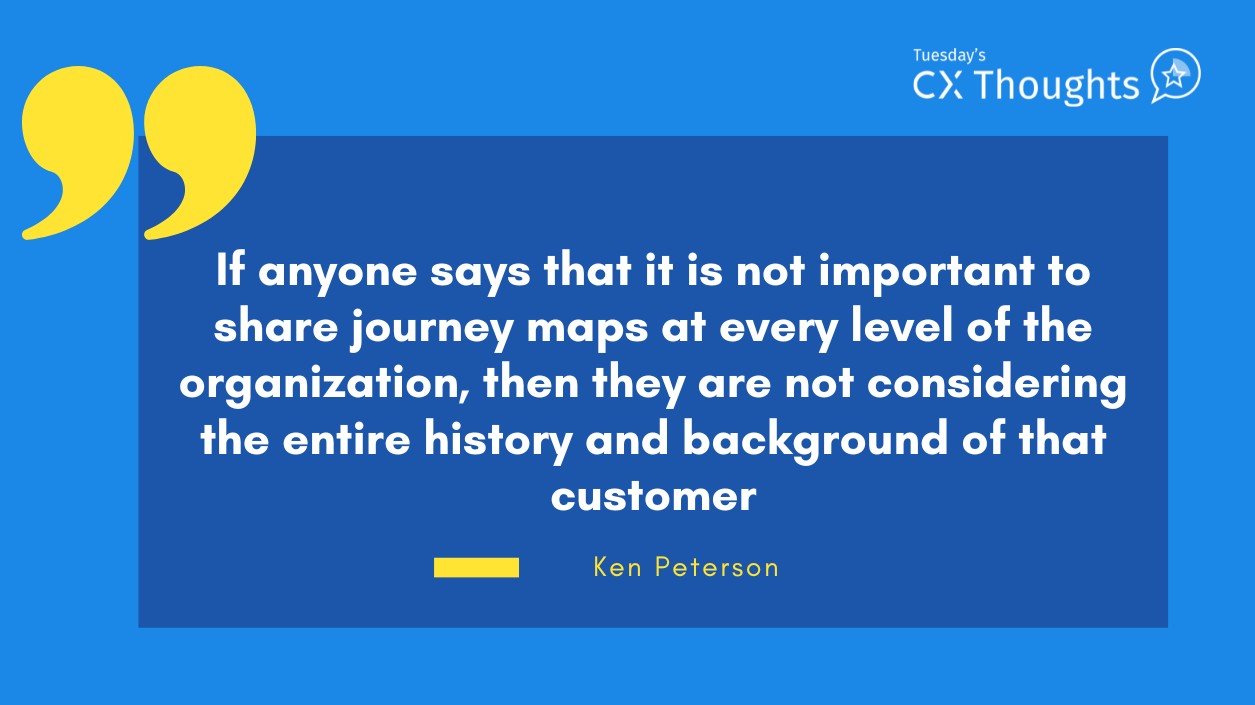
Check Out This Week’s Video Summary with Ken!
Perspective is everything in understanding. I remember thinking about the “distance” between the 60’s and the 80’s. From my perspective at the time, that twenty-year gap in time was monstrous. Then, following a recent conversation with a high school friend, I realized that the day I met them in the late 80’s was closer in time to the 60’s than today versus when we first became friends. I was a good enough friend that I did not bring it up at that particular moment so we did not both have to feel old at that moment.
It has been quite a journey since that day. I have experienced a few careers in different fields, including several years as a teacher/professor and in retail operations. Both those careers have relevance to my role today in Customer Experience – even though some may wonder how they apply. The teaching comes out frequently when working with colleagues, I want to share the knowledge and experience. Having time in retail operations – updating spreadsheets with sales forecasts, labor planning and inventory stats – connects a person with the reality of business situations as often seen by leadership. Customer Experience was important across both of those fields.
All three of my “careers” have been a part of my journey. Those experiences across the years bring a different perspective and ideas that build out how I view what both the frontline and management needs in Customer Experience software and programs. It also leads to something else that I am asking today. What might your customer service team use the buyer’s journey for?
Most brands understand the importance of the customer journey. The needs of the customer at each part of the journey and each touchpoint within the journey. Unfortunately, in most cases the only information about the customer journey often shared with the customer service frontline teams is the measurement of these touchpoints – and usually only the transactional touchpoint measurements. However, when the customer service teams better understands the personas and the various buyers’ journeys, then can better understand the customer – and better serve them.
At the awareness stage, knowing the key actions taking place – such as the marketing and information provided on the website – a customer service representative will be able to provide better information to the customer about the services or products that the customers are considering. From general inquiries to educational materials and appropriate diagnosis of need, customer service representatives will have a better understanding of customer considerations and potential interactions ahead of this interaction that will better lead the customer to the correct outcome.
At QuestionPro, we have our Surveys tools along with Market Research, Customer Experience and Employee Experience tools – if our customer service agent understands this stage well, they would not be quick to recommend information about a Market Research tool to someone that works in Human Resources. If we have customers considering the wrong product at the Consideration Stage, then they are unlikely to succeed even if we do close the sale.
Then it comes to the purchase, customer service agents can help in two critical ways. The first part is quite simple, but very important – being there to facilitate the purchase. Offering personalization or features that will help the customer in using the product and, of course, processing the sale (in whatever way it gets processed). They can also help the customer to overcome any concerns they may have and avoid objections – reassuring them according to their persona and common dilemmas that arise at this stage. Much like that last part of an automotive purchase, walking them through the features so they feel comfortable with everything when they get in the vehicle.
Finally, after purchase, the customer service interactions do not end. From putting the groceries into shopping bags to the first Quarterly Business Review, helping customers to be informed on the best way to use the product they just purchased will maximize their experience – with both the product and services – and will be more likely to recommend the brand to family, friends and colleagues. Knowing the right time to ask the customer for a referral comes from understanding all the relevant interactions in the Post-Purchase Stage.
When all of these efforts are aligned across the organization – which means communicating the customer journey and buyer personas with marketing, operations product and customer services – then the customer will benefit from all the interactions. That also means the brand will also benefit from stronger customer relationships which drives satisfaction, retention and recommendations.
If anyone says that it is not important to share journey maps at every level of the organization, then they are not considering the entire history and background of that customer, much like the person that has known me since the 80’s will know more about me than someone who had met me twenty years later. They can know me, but will not know everything that drives me in the same way.
Is there something wrong with your customer experience?
When you complete an honest assessment, the outcome can be beneficial. Particularly when it comes to your Customer Experience program.
Take five minutes and complete an audit for your organization here.
You may discover a gap in measurement, an opportunity to improve a process, the place where an organizational shift needs to take place or an opportunity to win a greater share of your customers’ wallets.
We all want that bigger “return”. In this situation, the worst case scenario is that you’ll get some information that will help your organization since there is no cost or obligation in completing this audit.







